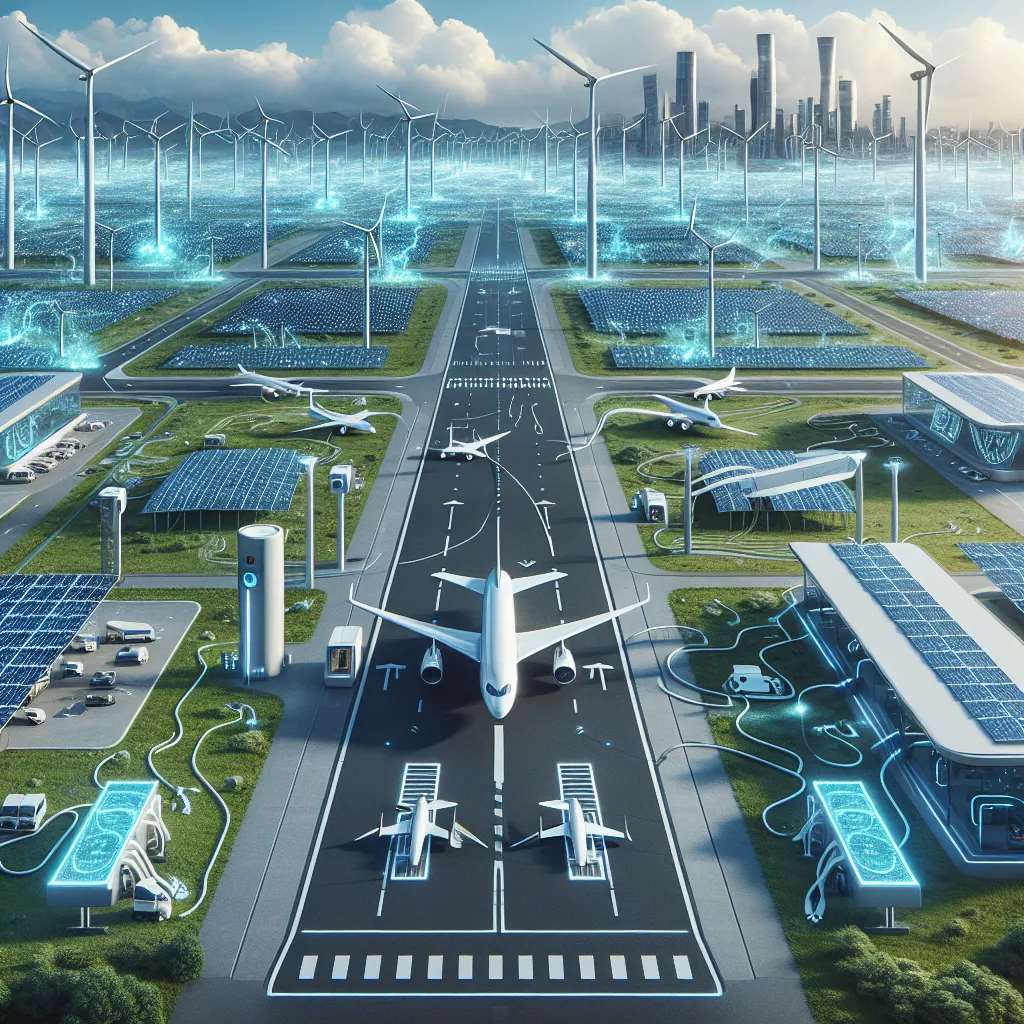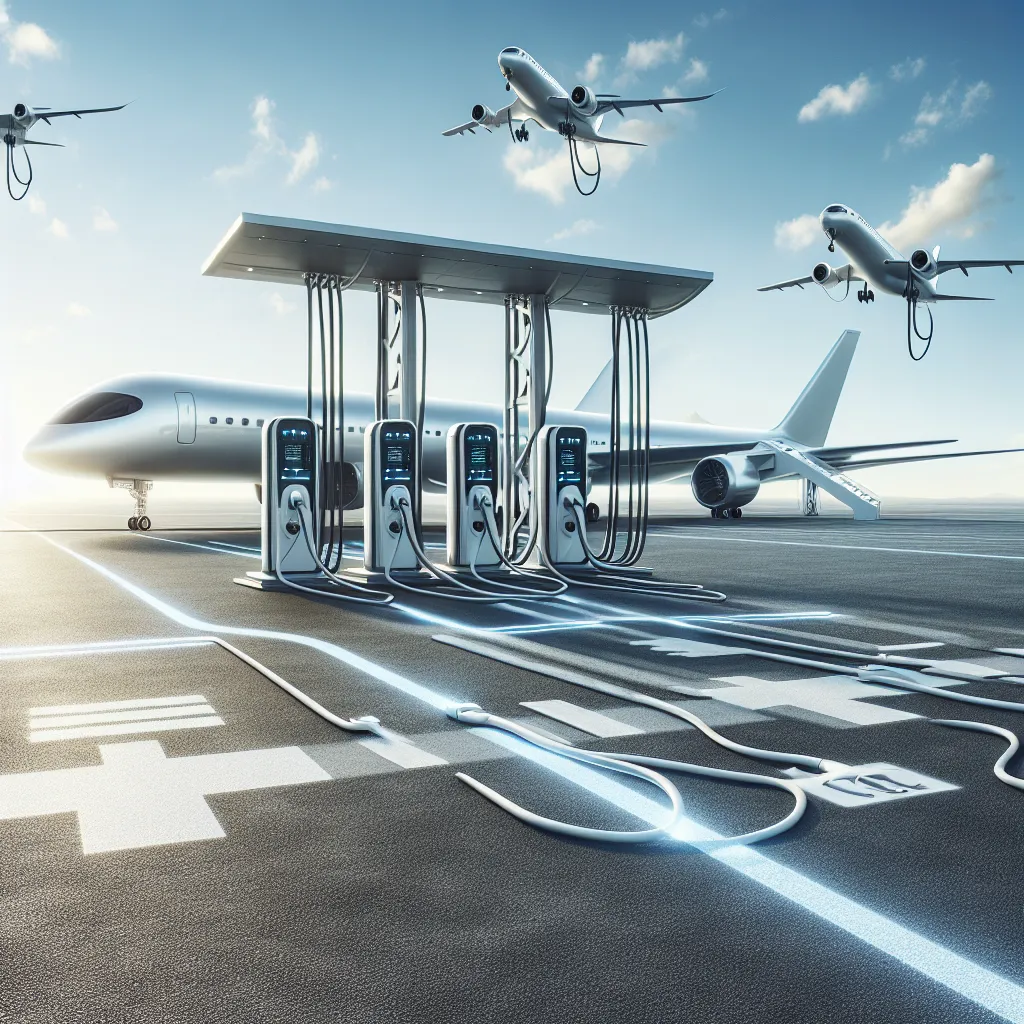The aviation industry is undergoing a revolutionary transformation with the advent of electric aircraft. This IELTS Reading practice test focuses on “How electric aviation is transforming air travel,” providing you with an opportunity to enhance your reading skills while exploring this cutting-edge topic. The test consists of three passages of increasing difficulty, accompanied by a variety of question types typically found in the IELTS Reading exam.
Table Of Contents
- Passage 1 (Easy Text)
- The Rise of Electric Aviation
- Questions 1-5
- Questions 6-10
- Passage 2 (Medium Text)
- The Impact of Electric Aviation on the Environment and Economy
- Questions 11-14
- Questions 15-19
- Passage 3 (Hard Text)
- The Technological Advancements Driving Electric Aviation
- Questions 20-23
- Questions 24-26
- Questions 27-30
- Answer Key
- Passage 1
- Passage 2
- Passage 3
- Conclusion
 Electric Aviation Transformation
Electric Aviation Transformation
Passage 1 (Easy Text)
The Rise of Electric Aviation
Electric aviation is rapidly gaining momentum as a potential solution to reduce the environmental impact of air travel. Pioneering companies are developing electric aircraft that promise to revolutionize the way we fly. These aircraft use electric motors powered by rechargeable batteries, similar to those found in electric cars.
The advantages of electric aviation are numerous. Firstly, electric aircraft produce zero emissions during flight, significantly reducing the carbon footprint of air travel. Secondly, they are much quieter than traditional aircraft, potentially allowing for extended operating hours at airports near residential areas. Additionally, electric planes have fewer moving parts, which could lead to reduced maintenance costs and improved reliability.
However, challenges remain. Battery technology is the most significant hurdle, as current batteries lack the energy density required for long-distance flights. Scientists and engineers are working tirelessly to develop more efficient and lightweight batteries to overcome this limitation.
Despite these challenges, the future of electric aviation looks promising. Short-haul flights are likely to be the first to adopt this technology, with several companies aiming to launch commercial electric flights within the next decade. As battery technology improves, we can expect to see electric aviation expand to longer routes, potentially transforming the entire air travel industry.
Questions 1-5
Do the following statements agree with the information given in the passage?
Write:
TRUE if the statement agrees with the information
FALSE if the statement contradicts the information
NOT GIVEN if there is no information on this
- Electric aircraft use the same type of engines as traditional aircraft.
- Electric planes produce no emissions while flying.
- The noise level of electric aircraft is lower than that of traditional planes.
- Maintenance costs for electric aircraft are expected to be higher than for conventional planes.
- Electric aviation will completely replace traditional aviation within the next five years.
Questions 6-10
Complete the sentences below.
Choose NO MORE THAN TWO WORDS from the passage for each answer.
- Electric aircraft use __ to power their engines.
- The main challenge facing electric aviation is the limitations of current __ technology.
- Electric planes are expected to first be used for __ flights.
- Companies are aiming to start __ electric flights in the next ten years.
- As technology improves, electric aviation may __ the entire air travel industry.
Passage 2 (Medium Text)
The Impact of Electric Aviation on the Environment and Economy
The potential environmental benefits of electric aviation are substantial and far-reaching. Traditional aviation accounts for approximately 2% of global carbon dioxide emissions, a figure that is projected to rise significantly as air travel demand increases. Electric aircraft offer a promising solution to this growing problem, with the potential to drastically reduce greenhouse gas emissions from the aviation sector.
Beyond the obvious environmental advantages, electric aviation could have profound economic implications. The transition to electric aircraft may lead to a restructuring of the airline industry, potentially favoring companies that adopt this technology early. Moreover, the development of electric aviation technology is spurring innovation in related fields, such as advanced materials science and energy storage systems, which could have wide-ranging applications beyond the aviation sector.
However, the path to widespread adoption of electric aviation is not without obstacles. The infrastructure requirements for electric aircraft are substantial, necessitating significant investments in charging facilities at airports worldwide. Additionally, the regulatory framework governing electric aircraft is still in its infancy, and aviation authorities will need to develop new standards and certification processes to ensure the safety and reliability of these novel aircraft.
Despite these challenges, many experts believe that electric aviation represents the future of air travel. As battery technology continues to improve and costs decrease, the economic viability of electric aircraft will increase. This could lead to a paradigm shift in the aviation industry, with electric planes becoming increasingly common for short to medium-haul flights.
The potential benefits extend beyond just environmental and economic factors. Electric aircraft could enable new business models in aviation, such as urban air mobility solutions that provide quick, emission-free transportation within and between cities. This could alleviate ground traffic congestion and open up new possibilities for regional connectivity.
As the technology matures, we may see a gradual integration of electric aircraft into existing fleets, with hybrid-electric planes serving as a transitional technology. This approach could allow airlines to reap some of the benefits of electric propulsion while the technology continues to evolve.
 Electric Aircraft Charging Station
Electric Aircraft Charging Station
Questions 11-14
Choose the correct letter, A, B, C, or D.
-
According to the passage, traditional aviation is responsible for:
A. 5% of global carbon dioxide emissions
B. 2% of global carbon dioxide emissions
C. 10% of global carbon dioxide emissions
D. Less than 1% of global carbon dioxide emissions -
The adoption of electric aviation technology may lead to:
A. A decrease in air travel demand
B. Higher ticket prices for passengers
C. Changes in the structure of the airline industry
D. Reduced innovation in related fields -
One of the main challenges for electric aviation is:
A. Lack of passenger interest
B. Insufficient airport infrastructure
C. Higher fuel costs
D. Increased noise pollution -
Urban air mobility solutions could potentially:
A. Increase ground traffic congestion
B. Reduce the need for regional airports
C. Provide quick transportation within cities
D. Replace long-haul flights
Questions 15-19
Complete the summary below.
Choose NO MORE THAN TWO WORDS from the passage for each answer.
Electric aviation offers significant environmental benefits by potentially reducing (15) __ from the aviation sector. The technology could also have economic impacts, leading to a (16) __ of the airline industry. However, the adoption of electric aircraft faces challenges, including the need for substantial (17) __ and the development of new (18) __ by aviation authorities. Despite these obstacles, many experts believe electric aviation represents the (19) __ of air travel.
Passage 3 (Hard Text)
The Technological Advancements Driving Electric Aviation
The rapid progression of electric aviation technology is being fueled by a confluence of technological breakthroughs across multiple disciplines. At the heart of this revolution lies the continuous improvement in battery energy density, a crucial factor in determining the feasibility of electric flight. Current lithium-ion batteries, while significantly more efficient than their predecessors, still fall short of the energy density required for long-haul flights. However, promising developments in solid-state battery technology and alternative energy storage systems such as hydrogen fuel cells are pushing the boundaries of what’s possible in electric propulsion.
Advancements in electric motor design are equally pivotal in the evolution of electric aircraft. The latest generations of electric motors boast unprecedented power-to-weight ratios, leveraging superconducting materials and novel cooling systems to achieve remarkable efficiency. These motors not only provide the necessary thrust for flight but also offer the potential for distributed propulsion systems, where multiple smaller motors are strategically placed across the aircraft, potentially revolutionizing aerodynamic design and efficiency.
The integration of these technologies is facilitated by sophisticated power management systems and flight control software. These systems must seamlessly coordinate the operation of batteries, motors, and control surfaces, optimizing performance while ensuring safety. The development of such systems requires a multidisciplinary approach, combining expertise from fields as diverse as electrical engineering, computer science, and aerospace engineering.
Additive manufacturing, colloquially known as 3D printing, is playing an increasingly significant role in electric aircraft development. This technology allows for the creation of complex, lightweight structures that were previously impossible or prohibitively expensive to manufacture using traditional methods. By reducing the overall weight of the aircraft, additive manufacturing directly contributes to increased range and efficiency of electric planes.
The advent of electric aviation is also spurring innovation in aircraft design. Without the constraints imposed by traditional combustion engines, engineers are free to explore radical new configurations that optimize aerodynamic efficiency and energy consumption. Concepts such as blended wing bodies and lift-augmented fuselages are being revisited and reimagined in the context of electric propulsion.
As these technologies mature, we are witnessing the emergence of a new ecosystem of startups and established aerospace companies vying to bring electric aircraft to market. This competitive landscape is driving rapid innovation and attracting significant investment, accelerating the pace of technological advancement.
However, it’s important to note that the path from promising technology to certified, commercially viable aircraft is long and fraught with challenges. Rigorous testing and certification processes are essential to ensure the safety and reliability of these novel aircraft. Moreover, the integration of electric aircraft into existing air traffic management systems presents its own set of complexities that must be addressed.
Despite these hurdles, the potential benefits of electric aviation are too significant to ignore. As we stand on the cusp of this technological revolution, it’s clear that the future of air travel will be shaped by the ongoing advancements in electric propulsion and related technologies.
Questions 20-23
Choose the correct letter, A, B, C, or D.
-
According to the passage, which of the following is NOT mentioned as a key technological advancement driving electric aviation?
A. Improvements in battery energy density
B. Advancements in electric motor design
C. Development of new navigation systems
D. Progress in additive manufacturing techniques -
The passage suggests that distributed propulsion systems could:
A. Increase the weight of aircraft
B. Reduce the need for batteries
C. Transform aerodynamic design
D. Simplify flight control software -
Additive manufacturing contributes to electric aviation by:
A. Increasing the speed of aircraft production
B. Reducing the overall weight of aircraft
C. Improving battery technology
D. Enhancing motor efficiency -
The development of electric aircraft allows engineers to:
A. Use only traditional aircraft designs
B. Ignore aerodynamic principles
C. Explore new aircraft configurations
D. Focus solely on engine performance
Questions 24-26
Complete the sentences below.
Choose NO MORE THAN THREE WORDS from the passage for each answer.
- Solid-state batteries and __ are being explored as alternatives to current lithium-ion batteries for electric aircraft.
- The latest electric motors for aircraft use __ and innovative cooling systems to achieve high efficiency.
- The integration of various technologies in electric aircraft requires expertise from multiple fields, including electrical engineering, computer science, and __.
Questions 27-30
Do the following statements agree with the information given in the passage?
Write:
TRUE if the statement agrees with the information
FALSE if the statement contradicts the information
NOT GIVEN if there is no information on this
- Current lithium-ion batteries have sufficient energy density for long-haul electric flights.
- Electric aviation is attracting significant investment from both startups and established aerospace companies.
- The certification process for electric aircraft is simpler than for traditional aircraft.
- The integration of electric aircraft into existing air traffic management systems is straightforward.
Answer Key
Passage 1
- FALSE
- TRUE
- TRUE
- FALSE
- NOT GIVEN
- rechargeable batteries
- battery
- short-haul
- commercial
- transform
Passage 2
- B
- C
- B
- C
- greenhouse gas emissions
- restructuring
- infrastructure requirements
- regulatory framework
- future
Passage 3
- C
- C
- B
- C
- hydrogen fuel cells
- superconducting materials
- aerospace engineering
- FALSE
- TRUE
- NOT GIVEN
- FALSE
Conclusion
This IELTS Reading practice test on “How electric aviation is transforming air travel” has provided a comprehensive overview of this exciting field. By engaging with this material, you’ve not only improved your reading skills but also gained valuable insights into a technology that’s set to revolutionize the aviation industry.
For more information on related topics, you might be interested in exploring:
- How Renewable Energy is Transforming Transportation Infrastructure
- The Impact of Electric Aviation on Reducing Air Pollution
- The Future of Electric Aviation
Remember, regular practice with diverse reading materials is key to success in the IELTS Reading test. Keep exploring various topics and honing your skills to achieve your desired score.



